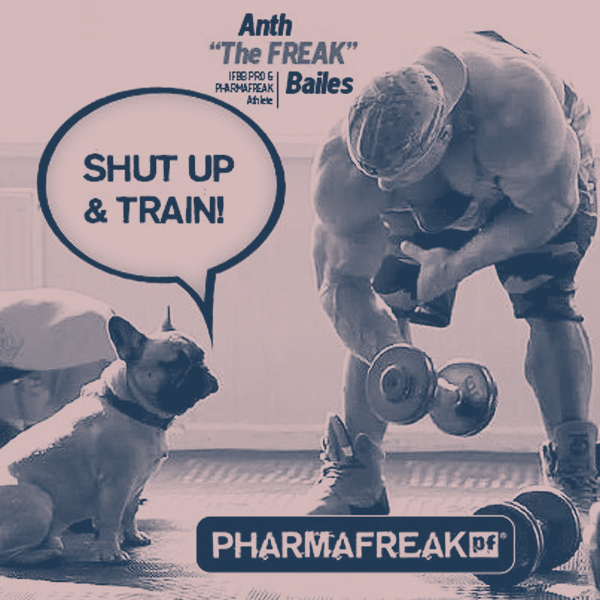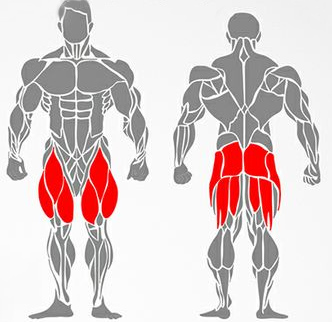30 Essential tips for building lean muscle

[bold_title]30 Essential Tips for Building Lean Muscle [/bold_title]
Training Tips for Muscle Growth
1
Make sure you vary the intensity and load in your workouts. Try to do around 70% of your workouts at high intensity but moderate weights, with the remaining 30% at a lower volume but with heavy loads.
2
Keep rotating your workout cycles so that your routine (sets, reps, loads etc) is changing every 2 or 3 weeks. It also effective to alternate accumulation and intensification phases, which will maximize results and help you avoid central nervous fatigue.
3
When completing your accumulation phases, you will get the best muscle growth results with a greater number of reps (8 to 12), moderate loads (65 to 85% of the 1RM) and more sets (4 to 8) than you will with lower reps with greater loads.
4
Put maximum effort into your intensification cycles (which are the part of your workout routine most focused on intensity). This type of strength-based exercise will increase muscle mass.
5
Your intensification phases should concentrate on using heavier loads (above 85%) with a lower number of repetitions (6 or less) rather than a high number of reps with lower loads.
6
Recovery is a priority. Growing muscle quickly and successfully relies on your being able to recover quickly from your last session and get back in the gym. Don’t underestimate the importance of recovery. Ignoring the need for recovery early on in the development of your muscle-growth workout routine can cause you difficulties later on.
7
For muscle growth you should concentrate on short duration, high-intensity activity (e.g. sprinting, weightlifting). Longer cardio exercises will not have the required impact on muscle development.

Specific Techniques for Muscle Growth
8
Use ‘train to failure’ techniques encouraging protein synthesis and helping to build muscle mass. Training to failure is a method of repeating a rep until you are physically unable carry out another in strict form without help. You must stop at this point as pushing past this can cause injuries.
9
Metabolic stress has been linked to muscle gain. You can engage metabolic stress as a component of your workout routines by undertaking a high number of moderate intensity exercises with short rest periods in between (10 seconds to 2 minutes).
10
Recognize your muscle fiber type and train accordingly for best results. If you are extremely fast and agile your muscle type is most likely fast-twitch fibre. To maximize these muscles train with low to moderate reps, moderate sets and heavy weights. Alternatively, if you are not naturally powerful, for slow-twitch fibre muscles you should train with higher number of reps, a higher number of sets but more moderate weights.
11
Whatever muscle-fibre type you are, don’t completely ignore slow-twitch fibers. Concentrating some time on growing these will help you to get the best possible muscle size.
12
Equally, fast-twitch fibers should not be overlooked. Remember that the aim is to affect as many fibres as possible for the best strength and muscle gains.
13
Think about the eccentric versus the concentric phases of your lifts. Try using a longer eccentric motion (the lowering phase where your muscles lengthen) of approximately 4 seconds and shorter concentric phases (the raising phase where the muscles shorten) of approximately 1 to 2 seconds.
14
For even greater results, look to progress to increasing the loading for the eccentric lift phases.
15
Those who have progressed their training beyond beginner stage should be using single-joint training to focus on single muscle groups. Working in this way means you can tackle both fast- and slow-twitch muscle fibers, present in all muscles.
16
Aim for muscle pump. Muscle pump is when your training causes blood to rush to, and swell, the muscle in use. This muscle pump is thought to assist muscle growth by bringing essential nutrients and oxygen to the muscles, keeping them healthy and maximizing growth potential.
17
Go heavy with forced reps. Lift the maximum load you can for 12 repetitions. Then increase that load and, with help from a trusted training partner where needed, complete four sets of twelve with the greater load.
18
Another technique is to train to failure on a lift, and to then do partial lifts known as ‘X’ reps. These are partial reps that you do a further 6 – 10 times until failure. You should use a spotter for these exercises.
19
Drop sets are an excellent way to build muscle. Alternate between high-intensity and low-intensity (at around 50% of the 1RM) on exactly the same exercise and push yourself to failure on the last set.
20
Intense circuit training that includes both agonist and antagonist muscle exercise will help build muscle. Intense exercise of these alternate exercise types, without rest in between for a set period of time, will increase metabolic stress, lactate and will induce a growth hormone response, all of which can contribute to muscle growth.
A Hypertrophy Lifestyle for Muscle Growth
21
Maintain a hypertrophy lifestyle. This means focus and determination to create a complete lifestyle that is geared towards increasing the size of your muscle cells to reach your targets.
22
Be clear what you are trying to achieve with your training and then work for it in a targeted way. You can lose fat and increase muscle mass at the same time but muscle development is more effectively achieved through a purely hypertrophy lifestyle. Cutting calories to lose fat at the same time as trying to build muscle might mean you simply do not eat enough and this can impair muscle growth.
23
Keep a lifestyle diary so that you can monitor the things you are doing. By keeping a record of all your workouts, your sleep patterns, your food intake etc, you will be able to better understand and analyze your performance when you change your training program.
24
Using a dynamo meter will help you train at a higher rate, which will maximize your muscle growth. The resistance from a dynamo meter is consistent and it doesn’t rely on gravity.
25
An important part of your hypertrophy lifestyle is the frequency with which you train. You can achieve the greatest training frequency by focusing on multi-joint lifts and making sure you use training splits. This allows you maximum recovery time whilst ensuring you get back in the gym.
26
Be target-driven by giving yourself specific goals to reach with every single exercise or training session you do. Whether it’s a specific number of lifts, or a particular weight to reach, give yourself something to aim for and go for it.

Eating Right for Muscle Growth
27
Make sure that you are including enough protein in your diet. Protein rich foods include chicken, tuna and low-fat cheeses. Even vegetarians can, and should, make sure they are getting plenty of protein through foods such as brown rice and lentils.
28
You need high-quality protein and fat in your diet. Try to go for foods that allow you to consume at least 10 grams of essential amino acids at each meal.
29
If possible, make sure you include plenty of meat in your diet. Meat will assist fast muscle gain.
And no cheating!
30
Keep your training technique tight. You will know when you are allowing momentum to help you lift the weight and when you are letting gravity help you to lower it. Be aware when you are ‘cheating’ in this way. Try to avoid ‘cheating’ as far as possible by using a lift rhythm that doesn’t allow you to do this so easily.


